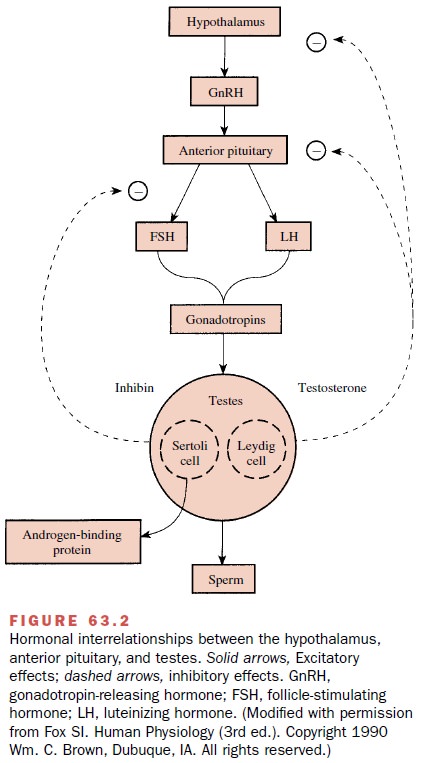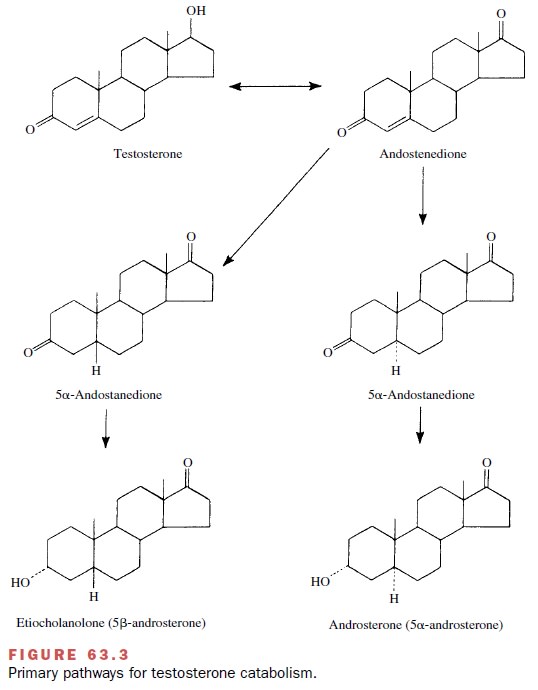Chapter: Modern Pharmacology with Clinical Applications: Androgens, Antiandrogens, and Anabolic Steroids
Regulation of Plasma Testosterone
REGULATION OF
PLASMA TESTOSTERONE
The regulation of plasma
testosterone is accomplished through a dynamic feedback interaction among the
hy-pothalamus, pituitary, and testis (Fig. 63.2). The hypothal-amus synthesizes
and releases gonadotropin releasing hormone (GnRH) into the
hypothalamic–hypophyseal portal system. Pulsatile release of GnRH stimulates
the release of the pituitary gonadotropins LH and follicle-stimulating hormone
(FSH).

LH and FSH then reach the testes, where they regulate
testosterone synthesis and spermatogenesis, respectively. The resultant
increases in serum testosterone levels exert a negative feedback at both the
hypothalamic and the pituitary levels.
The hypothalamus releases
GnRH in a pulsatile manner. The pulse frequency is sex specific, with males
exhibiting a 120-minute frequency and females exhibit-ing a 60- to 90-minute
frequency. The pulsating levels of GnRH from the pituitary modulate LH and FSH
re-lease. Androgens and estrogens can modulate go-nadotropin release at both
the hypothalamus and pitu-itary levels. In this regard, the gonadal steroids
modulate GnRH pulse frequency and amplitude at the hypothalamus level while
simultaneously modifying pi-tuitary responses to GnRH by influencing GnRH
re-ceptor levels in the pituitary. Increases in GnRH receptor levels with a
resultant increased sensitivity to GnRH is termed up-regulation, while a
decrease in GnRH re-ceptors is termed down-regulation. In the hypothala-mus,
the negative feedback of testosterone involves both the conversion to
dihydrotestosterone (DHT) and aromatization into estradiol.
A separate protein hormone
produced primarily in the testis, called inhibin,
also affects the secretion of FSH. Inhibin has been isolated primarily from
testicular extracts but also may be found in the antral fluid of ovarian
follicles in females. Inhibin decreases the re-lease of FSH from the pituitary
but does not affect hy-pothalamic production of GnRH.

The catabolism of plasma
testosterone and other androgens occurs primarily in the liver (Fig. 63.3),
where they are conjugated into water-soluble com-pounds that are excreted by
the kidney as the urinary 17-ketosteroids.
Related Topics